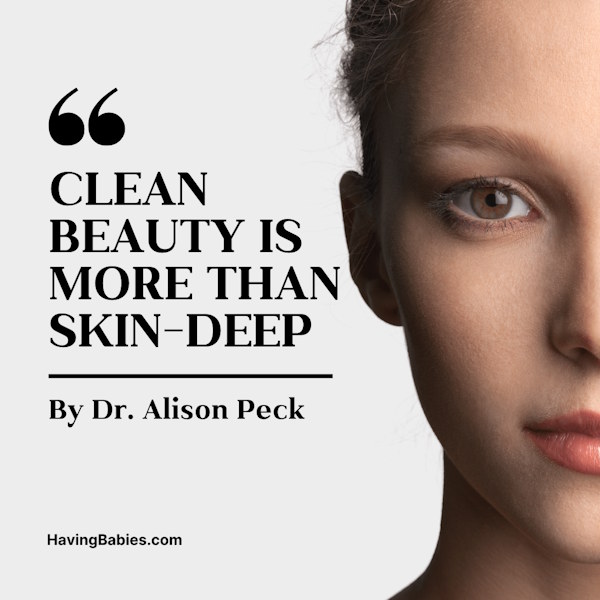Avoiding harmful chemicals in beauty products can support your fertility
The rise in the clean beauty movement has taken the world by storm. In recent years, the health-conscious consumer has kept a watchful eye on the types of ingredients that brands are using to formulate their products. The benefits of clean beauty have opened key discussions surrounding harmful chemicals and processed ingredients that had been used for cosmetics and beauty products for decades, and their potential side effect on health – including their possible impact on fertility.
How fertility is impacted by non-natural ingredients
It is important for the health-conscious individual and beauty product consumer to learn the ingredients in our products and stop using those with “bad stuff.” Though it can be challenging and time consuming for even the most educated individual to sift through the language of product labeling, it is vital. The adage “you are what you eat” can be expanded to “you are also what you put on your skin.” The average consumer may shrug at the organic chemistry verbiage on the back of their product and conclude that it can’t be too unhealthy if it’s available on store shelves. But sadly, this is not always the case.
Following are five ingredients to avoid for reproductive health and the reasons to avoid them:
- Parabens are commonly used preservatives that may disrupt hormonal balance.
- Phthalates are found in fragrances and can interfere with reproductive health.
- Triclosan is an antimicrobial agent that may disrupt hormonal activity.
- Formaldehyde is another preservative that can have adverse effects on fertility.
- Lead is found in some cosmetics. It can be harmful to reproductive health.
Retinol and other retinoids are found in many beauty products and there is limited research on their direct impact on fertility, but certain studies suggest potential concerns.
Finding natural “healthy” products
The best way for consumers to promote fertility is to become educated on harmful product ingredients and avoid them. Choose products with natural ingredients and opt for brands that prioritize fertility-friendly, clean formulations.
To make understanding potentially harmful ingredients easier for the average consumer, I recommend perusing the Environmental Working Group (EWG) website and mobile app and the Yuka mobile app. The Environmental Working Group advocates transparency in product labeling and offers certification programs for fertility-friendly products.
Leveraging this up-to-date research and information, the average consumer can make informed and empowering choices that support their reproductive health.
The clean beauty movement
It’s exciting that emerging research underscores the impact of toxic ingredients on the endocrine system, linking them to hormonal disruptions, and that beauty companies are listening. Brands like Beautycounter, Tata Harper and Ilia Beauty are at the forefront of the clean beauty movement. These organizations prioritize the use of healthy ingredients. They also promote transparency in their formulations. Such brands contribute to a positive shift in the beauty industry by offering safer alternatives and raising awareness about the potential health risks associated with toxic ingredients in the endocrine system.
Clean beauty doesn’t have to be expensive, either. There is a spectrum of options. While Sephora and Ulta offer products at a premium, lower-cost alternatives at Trader Joe’s and Whole Foods contain the same ingredients. Knowing the differences between ingredients can help you become a more discerning – and healthier – shopper.
Bottom line
During their fertility journey and expectant motherhood, people tend to be very concerned about what they put in and on their bodies. Naturally, they want the best environment to nurture the health of their growing baby. It’s important to understand that harmful chemicals may negatively impact fertility. If you plan or want to conceive, do the homework and learn the ingredients that impact the endocrine system and hormones. Then, I encourage you to choose wisely.

